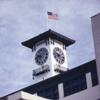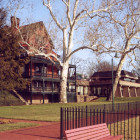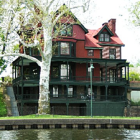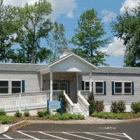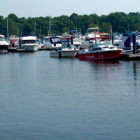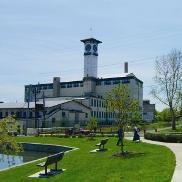
The southern terminus of the D&L Trail was first settled by Europeans in 1681. Bristol’s prime location helped make it a busy port and industrial town in the 1800s. Coal yards and warehouses sprang up along the canal, as did large mills that manufactured carpets, woolens and other textiles. Later, shipyards thrived, and the neighborhoods still showed signs of modest worker housing, along with elegant Victorian homes. The last portion of the Delaware Canal flowed through town into the basin near Bristol Marsh.
Bristol is the oldest town in Bucks County and the third oldest in Pennsylvania. Its Delaware Riverfront resembles a New England seaport due to the influence of the Merchant Shipbuilding Corporation, which arrived in the town in 1917. During World War II, the shipyards were converted for use in the manufacturing of aircraft. By the 1960’s though, the factories stood abandoned and the following years brought slower development. The growth that did occur was largely due to the generosity of Joseph Ridgway Grundy, industrialist and politician.
Today, Bristol hosts special events near the river, providing a perfect opportunity to stroll, shop, or dine within the 50-site Radcliffe Street Historic District. Along the restored riverfront you’ll find Victorian mansions, including the Margaret R. Grundy Museum.
The Spurline Trail offers visitors a wonderful way to enjoy the town’s improved waterfront. Nearby you’ll find the Silver Lake Nature Center (1306 Bath Rd., 215-785-1177). This 235-acre sanctuary offers a variety of activities for individuals, families and groups. There are three miles of trails that carry you through the habitat of more than 160 species of birds, raccoon, muskrats, opossum, deer, among many others.

